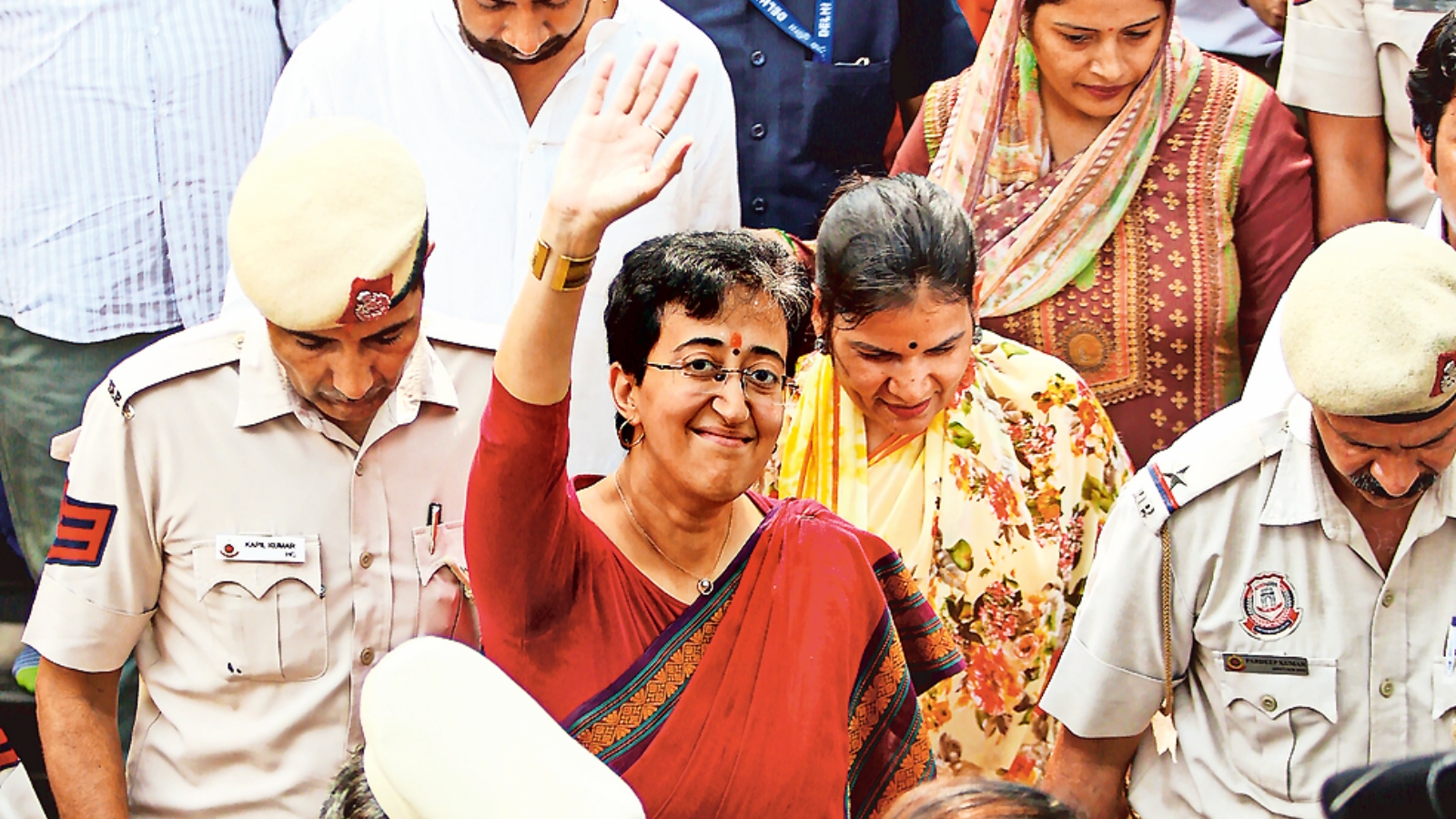
Delhi’s new CM, Atishi, with her crisp saris and college lecturer mannerisms, brings back memories of Sheila Dikshit, the gracious outsider who stunned local political heavyweights by getting elected thrice as Delhi CM. Atishi’s tenure, however, promises to be much shorter. She has made clear she is merely standing-in for Arvind Kejriwal and has symbolically kept his chair vacant. While Kejriwal has taken the high moral ground by relinquishing his chief ministership, he is actually simply obeying the Supreme Court order which while granting him bail in the excise matter disallowed him from entering the CM’s office or signing files. Kejriwal has announced that he wants an early election to coincide with Maharashtra polls. He believes that the election will be a referendum on his popularity and channelise public anger against the BJP’s politics of vendetta. While Kejriwal is perceived as a political victim, nevertheless his squeaky clean image has also got besmirched by the alleged excise scam involving the Delhi government. The former CM’s other handicap is that there is no second line of leadership in his party. Kejriwal guards his turf zealously and cuts out any potential rival.
Kejriwal’s confidence of re-election should be tempered by the knowledge that Delhi is an electoral minefield, which has a history of throwing out seasoned political warhorses and voting in unknown challengers. Back in 1967, when the mighty Congress ruled India, the national Capital was the exception where the upstart Jana Sangh stormed to power. Vijay Kumar Malhotra was elected the Chief Executive Councilor of Delhi and former IFS officer Manohar Lal Sondhi defeated Congress stalwart Meher Chand Khanna for the New Delhi Lok Sabha seat. The Hindutva Jana Sangh rode to victory on the back of overwhelming support from Punjabi refugees from Pakistan.
Changing character
Back in the days, when I first covered the city as a reporter, Delhi comprised basically of three groups: Punjabi refugees in south and west Delhi, Muslims and trader families living in old Delhi and villagers on the Capital’s outskirts. Delhi in the sixties and early seventies was dismissed contemptuously by Bombayites as an overgrown village where the fanciest western pastry on sale was a pineapple cream cupcake. Khan Market, which has now become a metaphor for sophisticated consumption and high-end shoppers, was then a shabby middle class market with refugee families residing in tiny apartments on the first floor. Public transport was erratic and so was the electricity supply. Many cycled to work.
Over the decades, the city’s population had increased exponentially as migrants from all over the country, particularly Bihar and UP, flocked to the Capital. The influence of Punjabis and old Delhiwallahs declined. The Congress’s Dikshit’s long reign as CM (1998 to 2013) broke the cycle of alternating political parties being voted to power in the Assembly. She was given credit for changing the face of the city with an ever expanding metro service, flyovers and a marked improvement in the erratic power supply by introducing privatisation, even if some of the innovations in her tenure were in the pipeline before she came to power. But, in 2013, Dikshit was voted out equally decisively, even losing her MLA seat from New Delhi to fledgling politician Kejriwal, epitomised by his long woollen muffler and humble demeanour. Kejriwal, who was an activist in Anna Hazare’s anti corruption movement, has been chief minister ever since. Voters were attracted by his promises of freebies, minimal electricity bills for the poor and improved government schools. Kejriwal’s reason for not delivering on all his promises is that since Delhi is a Union territory and not a state, a succession of LGs thwarted many of his schemes.
Deft moves needed
As with Kejriwal, the Delhi BJP also exudes confidence though it has been out of power in Delhi for 25 years. The BJP won all seven Delhi parliamentary seats in 2024. The BJP’s pitch is that only a double-engine sarkar can work in the Capital. Its weakness is its lackluster local leadership. In the past, the party has tried to get around this lacuna by importing outsiders and each time, the experiment failed. A reluctant Sushma Swaraj was roped in at the last moment as CM candidate in 1988, Kiran Bedi in 2015, while in 2020, Prime Minister Modi and Amit Shah led from the front. For the coming election due in February — that is, if not held earlier — there is a buzz that the feisty Smriti Irani, after her Amethi defeat, could be fielded. But local BJP workers are not enthused. The Congress also has a dilemma. Does it join forces with AAP and cede first place to Kejriwal? Party workers warn that such a move would eventually make the Congress irrelevant in the city. The electoral outcome for Delhi will depend on how skillfully the three major parties play their cards.


